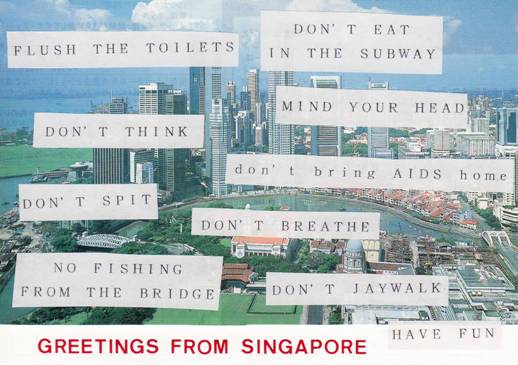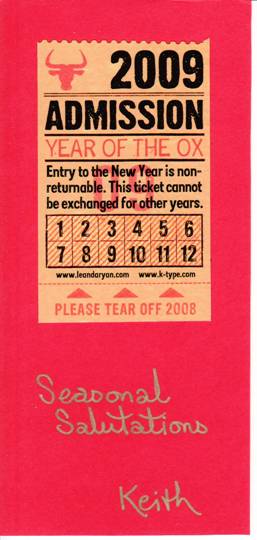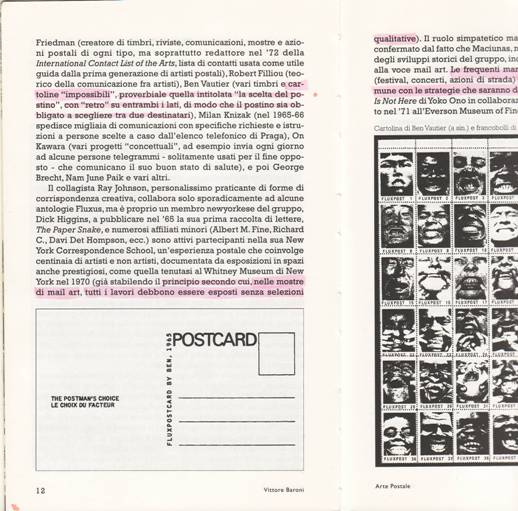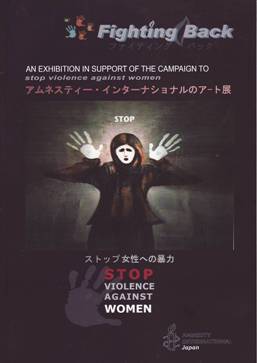Of Squids and Men: An Introduction to Mail Art
I got a dried squid. In the mail. It’s an Alien-like brownish monster, hard and flat. I found it some time ago in my box together with other more common pieces of mail. The friend who was so brave – or foolish, depending on your point of view – to face the puzzled look of the postal clerks, had simply glued a stamp on the naked squid, and scribbled my address on its naked body. Nearly every day, when I come home, I find something in my mail box. It may not be as weird as the squid, but it’s always something interesting: handmade postcards, zines, catalogues, artist books, CDs, and of course good old letters (remember them?). Hundreds of people around the world experience the same thing every day, and several thousands more do it with less frequency but still enjoy the thrill more often than not. What have we done to deserve all this? We are mail artists.

Mail art, or correspondence art, is a loose international network of people who exchange artworks, ideas and good vibrations through the mail – both traditional and, more recently, electronic. Actually this is not a cohesive, organised network but rather an ever-changing, organic entity with no center, made up of a theoretically infinite number of sub-networks. There is no leadership, no manifesto, no written rules. It is an interactive, non-competitive, ephemeral practice – intimate and social at the same time – whose members don’t sell their works but exchange them with each other as gifts, completely bypassing the money-driven, elitist, professional art world.

The postcard (handmade, of course!), is one of the favorite means of expression. Other recurring “genres” are collage, xerography, rubberstamp art (using both hand-carved and commercial stamps), artist books, artistamps (fake postage stamps), photos, CDs, comics and so on. The list is virtually endless and one’s own imagination is the only limit. The written word (prose, poetry etc) is not as much represented as visual expression, but written contributions are always welcome. As collaboration is one of the key words in the Network, some of the more interesting projects involve the participation of many people. In the case of the so-called “assembling,” for instance, every participant sends a certain number of copies – usually of the same work – to the organizer, who then assembles and collate them into a book or box. Everyone who has taken part in the project eventually receives a copy of the finished work.
Though Japan is not massively represented in the Network, many Japanese have been active mail artists through the years, including Gutai founding member Shozo Shimamoto, Fluxus artist Eiichi Matsuhashi, visual poet Keiichi Nakamura, and Ryosuke Cohen of Brain Cell fame.


A task group was formed, with myself concentrating on the mail art part of the project (writing the call, spreading the word, and instructing the others on how to collect and catalogue the incoming works), while other people looked for a suitable venue for the exhibition, invited experts and activists to talk, and organized other collateral activities. We were lucky because overall mail artists are socially and/or politically committed people. So we were able to gather more than 250 contributions from all over the world, including postcards, collages, drawings, photographs, and even local artists, who usually are not active in the mail art network, lent or donated paintings, sculptures and embroidery. The end result was “Fighting Back: Stop Violence Against Women”, an exhibition that was a huge success and has traveled to several cities.
The “Fighting Back: Stop Violence Against Women” catalogue costs 500 yen or $5.00 postpaid worldwide.
Copies can be ordered at ilovemondo@yahoo.co.jp.
Randy Swank
Randy Swank



